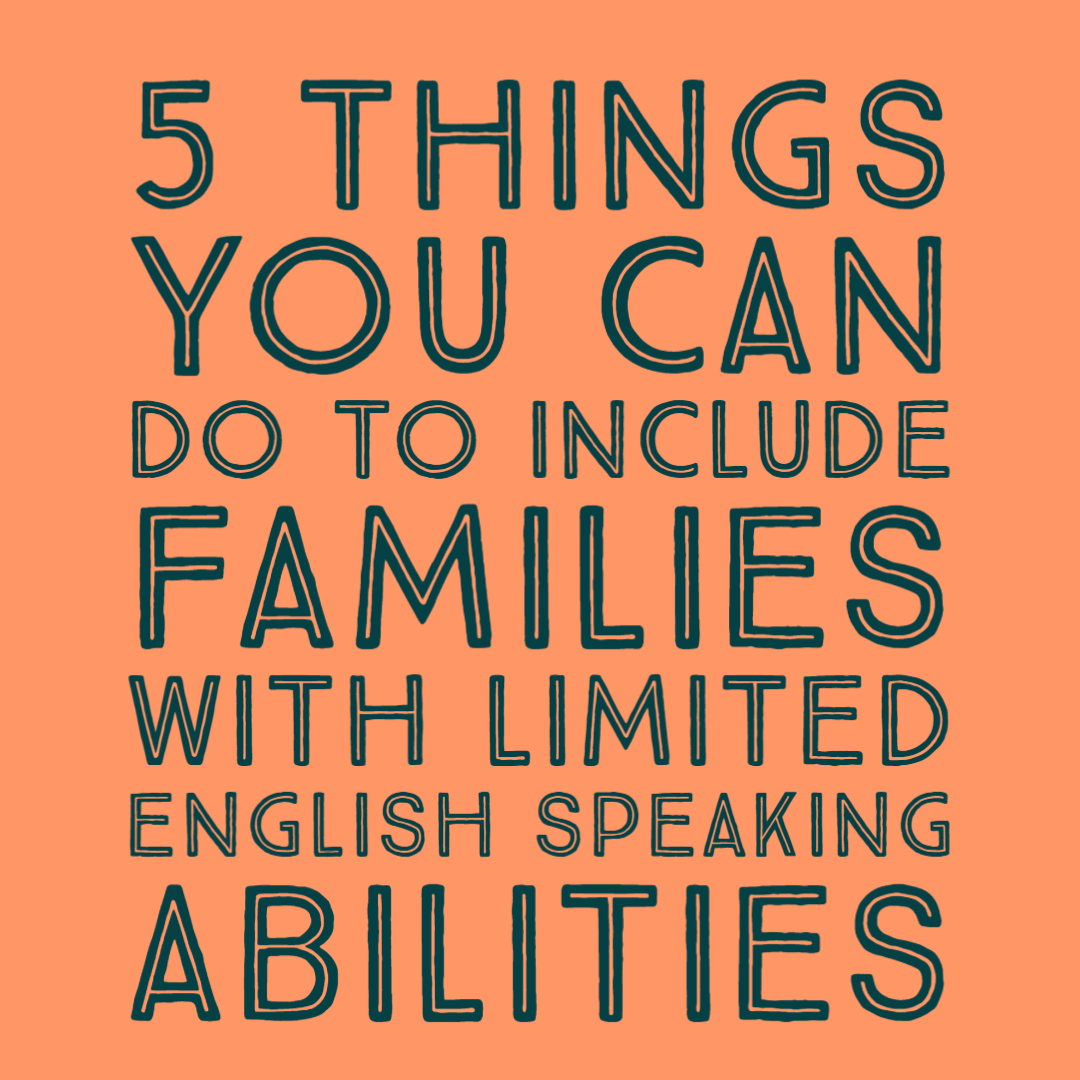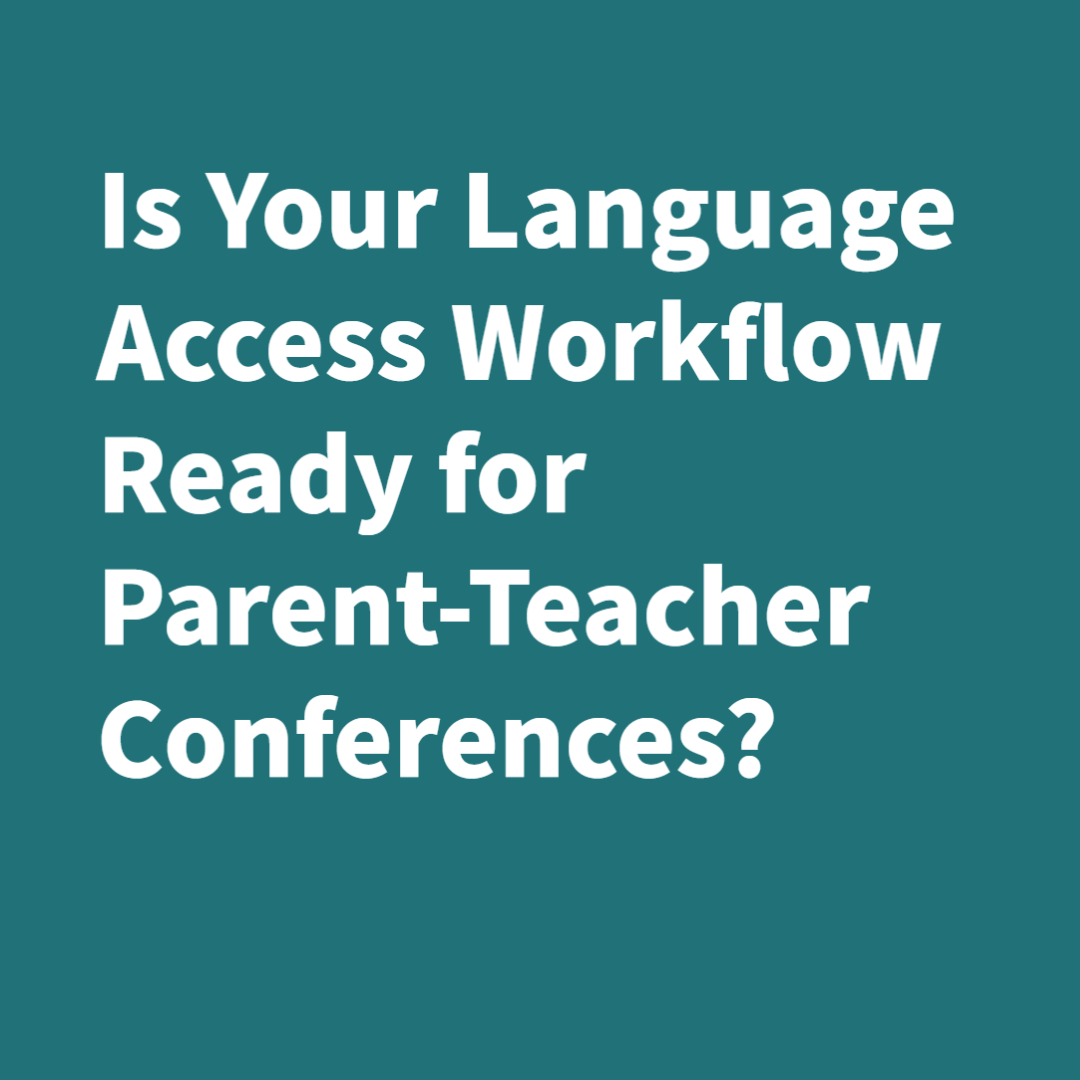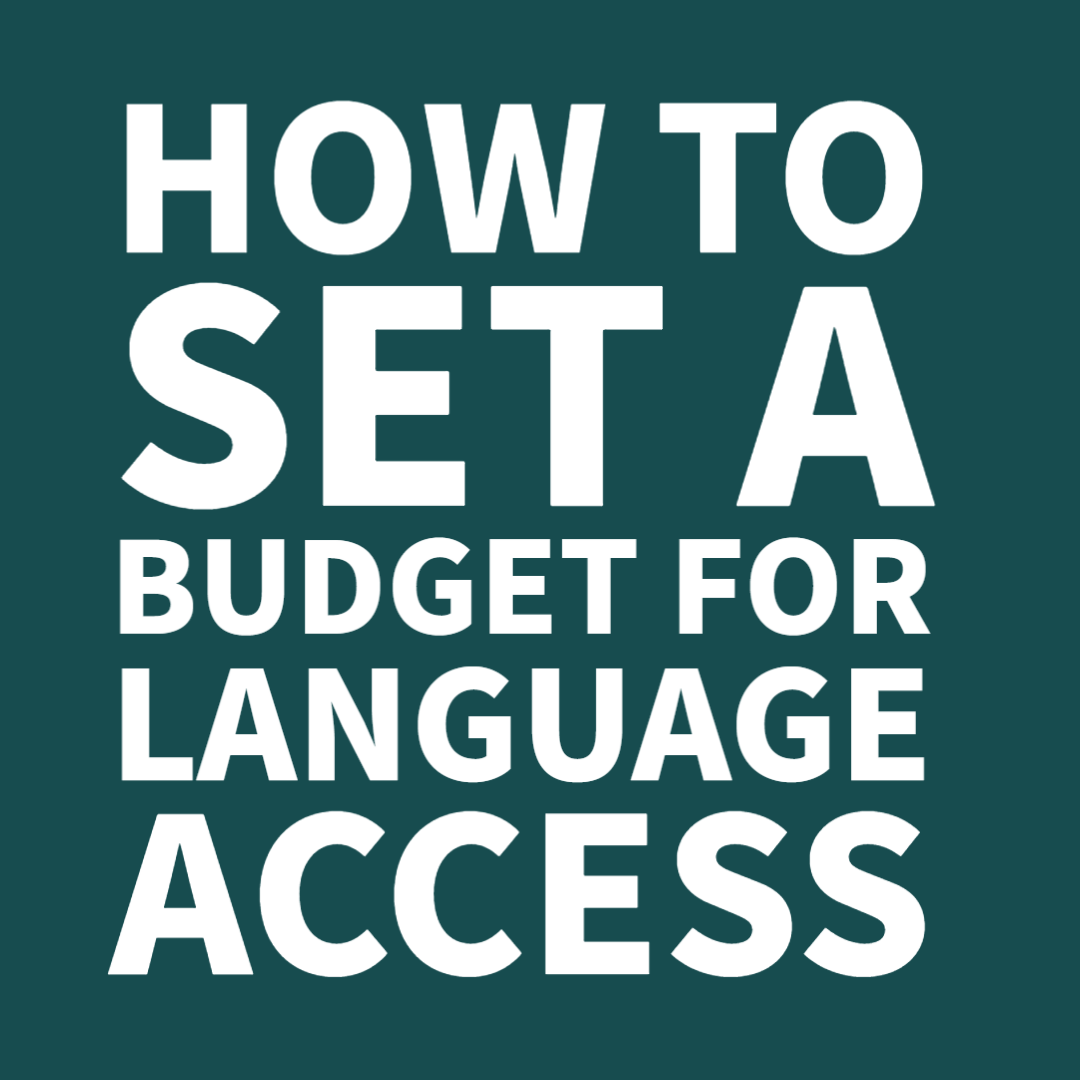
Because Equal Access for Everyone means Everyone has a voice.
-

Strengthen Your Language Access Plan with Smarter Data Tracking
How do you connect with families when they don’t speak the same language as your staff? For schools and community organizations, language barriers create real obstacles to engagement. Yet when families are more engaged, the benefits are clear: stronger relationships, higher trust, and better outcomes for the entire community. Language access programs remove these communication…
-

The Top 3 Things You Need to Do to Successfully Execute a Language Access Program
Did you know that nearly 68 million US residents face language barriers in everyday communication? Successful language access programs bridge this gap so that no one is left unheard, but organizing and coordinating such programs effectively remains a daunting task for many organizations. This can lead to fragmented services and unmet needs. To execute a…
-

Language Access: A Catalyst for DEI in 2024
As businesses plan for the coming year, diversity, equity, and inclusion (DEI) initiatives remain a hot topic. When you think of DEI, unbiased hiring practices and awareness and sensitivity training are probably the first things that come to mind. But language access – providing materials in the language of your stakeholders – is also crucial…
-

How to Set a Budget for Language Access Services
One of the first steps in providing your community with the language access services they need is to figure out how much it will cost. And that means getting an accurate understanding of costs so you can present a budget and get it approved. In this blog post we’ll walk you through the process of…
-

Six Reasons Why You Need a Portal to Help You Manage Language Access Requests
Every person, regardless of language or background, deserves to be heard and understood. Behind every request for language services is a person seeking clarity, understanding, and connection. Yet, for language access coordinators (or anyone else in charge of arranging language assistance) managing these requests can be overwhelming. For example, coordinators may receive a flurry of…
-

Is your Language Access Program Mature Enough to Meet Your Community’s Needs?
About 8% of the U.S. population, or 26.7 million people, are not native speakers of English and have limited English proficiency (LEP). Language access – providing translation and interpretation services so this population can access the services they need – helps these members of our community to work, learn, receive care, and thrive in our…
-

The Human Faces of Language Access: People in Your Community Benefitting from Translation or Interpretation
Language access – receiving information and materials in one’s own language — is a human right and critical for helping non-native English speakers thrive in our communities. Every day, interpreters and translators get to use their language expertise and cultural intelligence to help people resolve legal and financial issues, get past trauma, receive medical support,…
-

5 Things You Can Do to Include Families with Limited English Speaking Abilities
If you work in education, governments, health care, non-profits, or any agency that helps the community, you probably ask yourselves how to be more inclusive. A simple way to make a huge difference for people is to provide language access for families who have limited English speaking abilities.
-

How to Create a Terminology and Glossary Lists
Creating a terminology and glossary list is an investment in time that will pay off quickly. If you plan ahead and create a process for keeping the list active, you can enable high quality transaltions and ensure all of your communication from your organization is consistent and clear for your end-users. The following are some…
-

Is Your Language Access Workflow Ready for Parent-Teacher Conferences?
Parent-Teacher Conferences. If you work in a school with students who are from families with limited English abilities, this can be a stressful event even in a normal year. However, we’re not in a normal year. We’re in the middle of a pandemic which has impacted our schools in so many ways. So, we’ve been…
-

How to hold Inclusive Virtual Back-to-School Meetings
Before scheduling a meeting for your diverse school or district, there are some things to consider to make sure your meeting is inclusive regardless of English abilities.
-

How to Set a Budget for Language Access
On a budget? You can prepay for translation services and save! Click to learn more. These are a few of the many things you can do to create quality human-sounding communication for your clients who may not speak English fluently. There are online tools that may be free, but if your clients can’t understand your…
